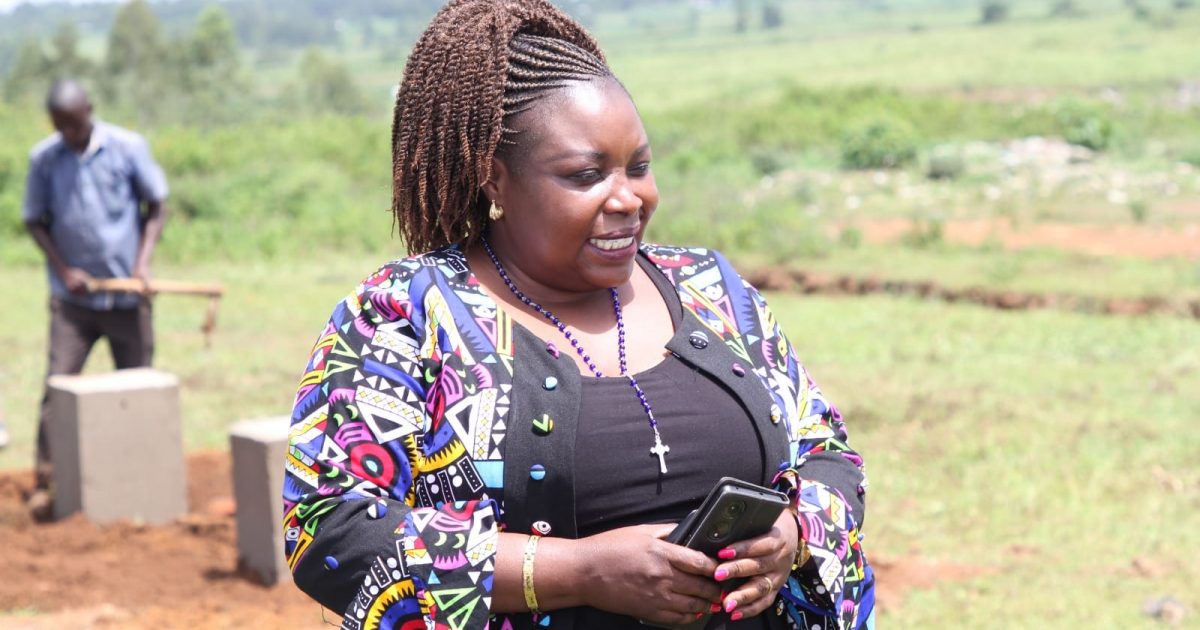Kakamega County is set to double the budget towards addressing climate risks and consider opportunities for climate finance during the 2024–2025 financial year.
The initiative comes at a time when the country has experienced heavy rains that have led to the destruction of properties and food crops, with Kakamega being one of the affected counties.
The County Executive Committee Member in Charge of Environment, Water, Natural Resources, and Climate Change, Peninah Mukabane, said the county government will include carbon credit in the Act.
She asked community members to take an early opportunity to benefit from the Carbon trade in the international markets once the act is reviewed, noting that it will also create an enabling environment for other key players in environmental conservation.
“For us to provide an enabling environment, we are reviewing our climate change act to include Carbon Credit in order for communities to participate in the carbon trade for international markets,” she pointed out.
She said that for a community member to benefit from Carbon credit, they will register themselves and indicate the number of trees they have grown on their pieces of land.
“The condition to benefit from Carbon Credit is that once you have registered yourself that you have trees, for instance, on one acre of land, you don’t interfere with them for the next 25 years. You don’t cut them down or uproot even one of them; even if the tree falls by itself, you are supposed to leave it that way,” she explained.
She said the county government has already provided an opportunity for residents to grow many trees through the county’s greening programme and has partnered with the Kenya Water Towers Agency to provide tree seeds and polytubes to raise tree nurseries.
“We have enough tree nurseries in the county and enough seedlings. It is now the responsibility of residents, through their own initiative, to reach out to those nurseries to access the trees and go and plant them,” noted the CECM.
Through the greening programme, the county is engaging 12 contractors, one in each sub-county, with a target to plant a certain number of fruit and indigenous trees in every ward.
The Contractors are also expected to plant the trees in schools and encourage school-going children to adopt them, with every child expected to plant and adopt between 7-10 trees in every school.
“We encourage school going children to adopt trees so that when they grow up, they will understand the importance of planting and nurturing trees,” she added.
The county government has also empowered five community Forest Associations to plant, protect, and nurture trees. These are Kakamega Forest CFA, Mwireshi CFA, Bunyala Forest CFA, Malava CFA, and one in Lugari.
“We have been able to support all the Community Forest Associations to establish tree nurseries, and they currently have enough seedlings to sell to the population,” she added.
To protect the Kakamega Forest, the CECM noted that the county is working with the Kenya Forest Service, Safaricom, and Rhino Ark Foundation to fence the Kakamega Forest.
“We completed fencing of 15 kilometers in Phase 1, and we are about to start phase 2 of the fencing project, which will cover 34 kilometers. It will extend to Vihiga County, which is also contributing some funds to the fencing project,” she noted.
“With climate change, most of the forest areas are experiencing invasive species. Research has shown that once you fence a forest, there is regeneration, and the original plant and animal species start to come back because there is little interference. This will in turn increase the number of tourists visiting the people of Kakamega,” she added.
She said the county government is partnering with the International Fund for Agricultural Development (IFAD) and Nature Kenya, which are helping to protect water catchment areas such as the Yala River.
“They have even helped us to train the Water Resource Users Association. I encourage other organizations to join us in protecting other rivers within the county so that we can protect them for the sake of our future generation,” she added.
The CECM encouraged residents who have land that extends to riparian zones or near rivers to plant the right trees and desist from cultivating on that land.
“And when I tell you to protect your riparian area, it is also for your own benefit because soil erosion will affect your plants. They will lack nutrients that are sufficient for your crops to do well. Instead of cultivating on riparian areas, grow fruit trees or indigenous trees and put-up bee hives,” she added.
As part of climate mitigation, the county government is also targeting investment in green energy, particularly solarization, the use of energy-saving Jikos, and hydroelectric dams.
“In order to supplement energy, we have a partner known as Hydro Box who will come to support us so that we also encourage cottage industries to come up. We have had challenges with fluctuation in electricity in Kakamega; the downtime is too high for Kenya Power, and therefore we are looking for alternative ways to provide a conducive environment for our business people through providing reliable energy,” she said.
The county, she added, has received funds from the United Nations to create awareness and actions to protect the environment, focusing on land restoration, discouraging desertification, and drought resilience.
By Moses Wekesa



